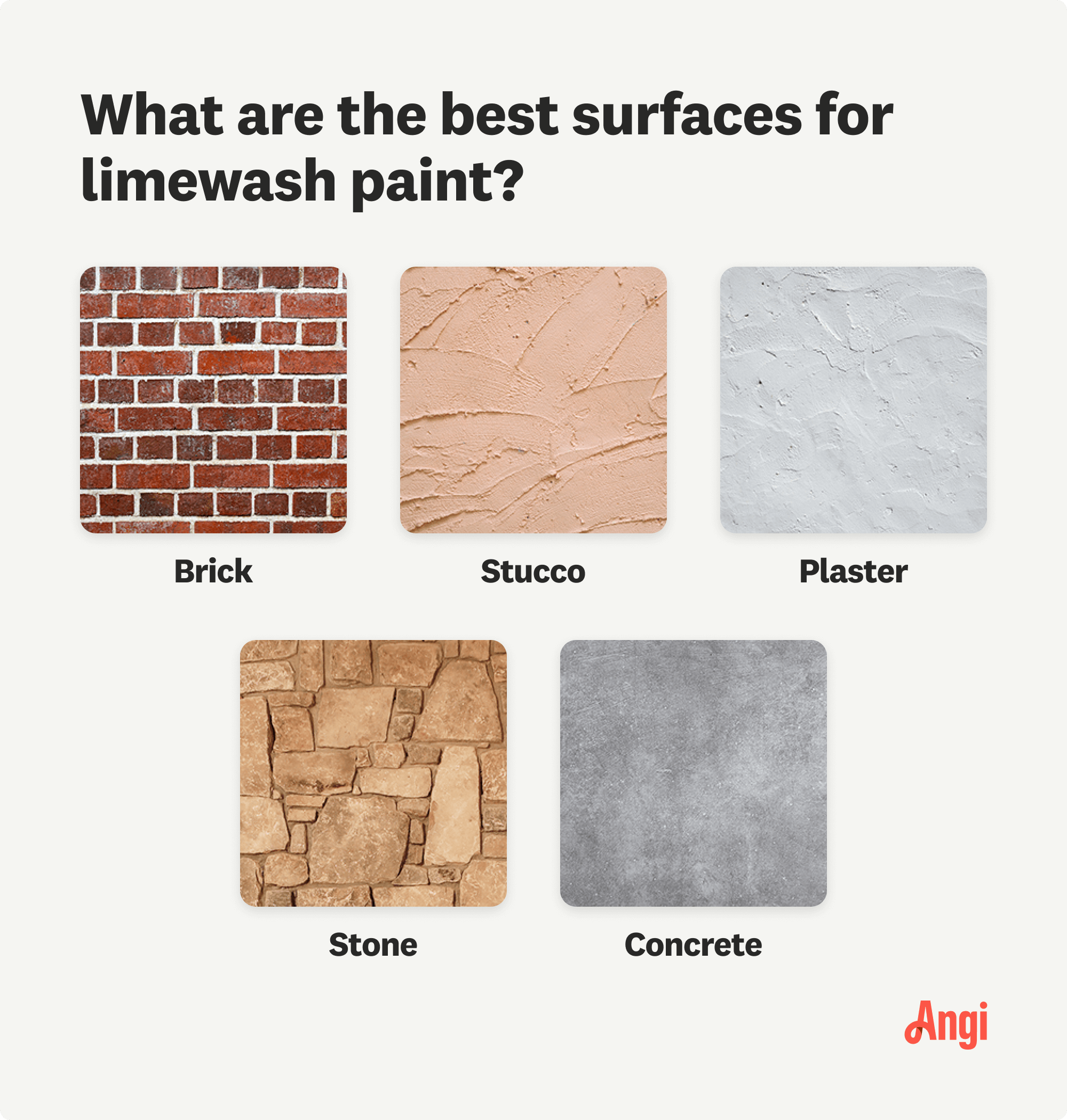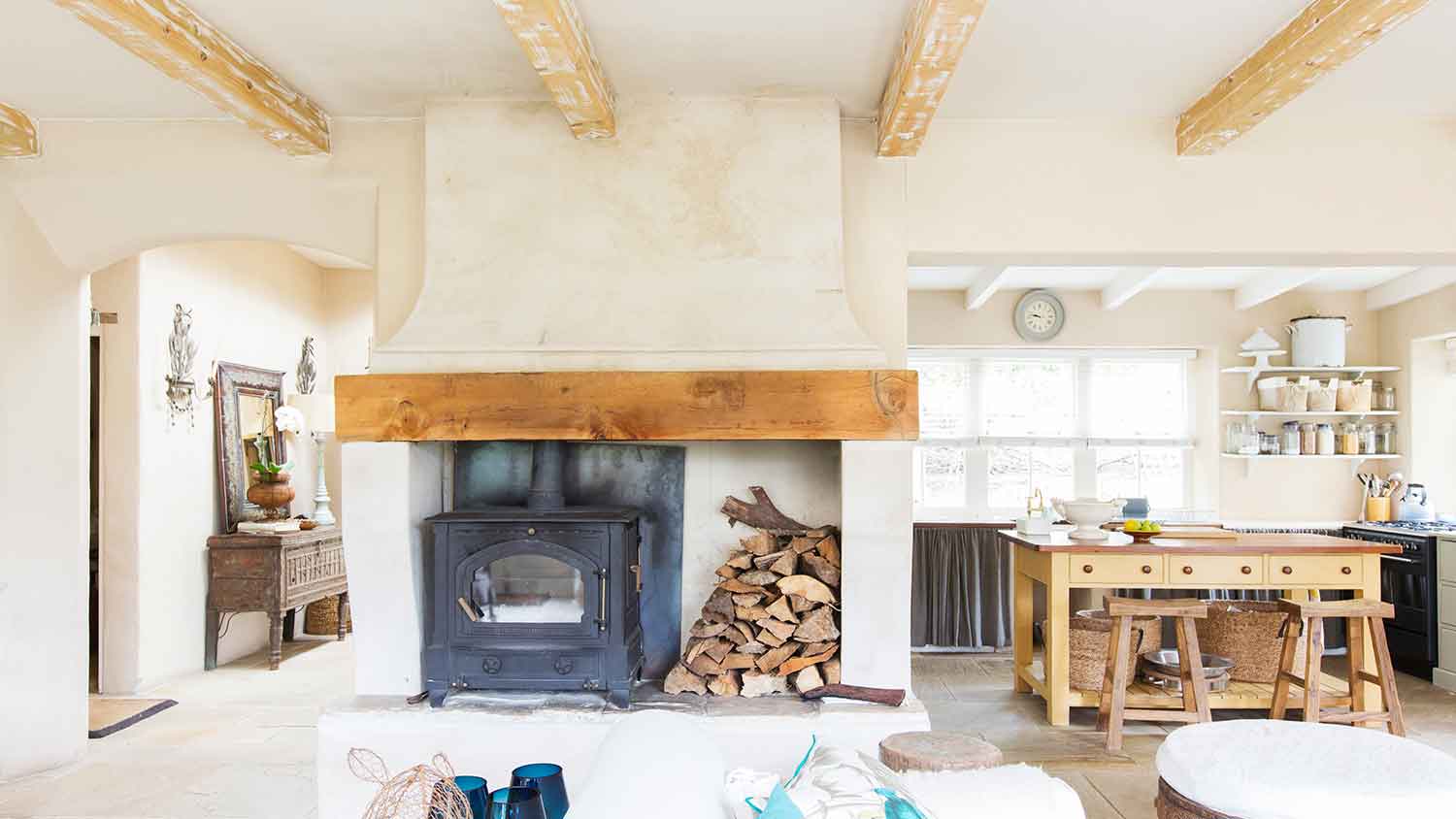
The cost to paint the interior of a house in Baltimore, MD depends on size, layout, type of surface, and more. Learn what factors can influence your total in this guide.
It's the battle of the brushes—which one will you choose?


Limewash and whitewash are both suitable for porous interior and exterior surfaces.
Limewash offers more customization when it comes to color and appearance.
Limewash offers more breathability, making surfaces less prone to mold issues.
Both whitewash and limewash offer a matte, chalky finish, with limewash providing options for translucent and opaque finishes. In contrast, whitewash delivers a sheer or semi-opaque finish. In this article, we’ll discuss the differences between limewash and whitewash to help you decide on the best option for finishing your masonry project.
There are a few key differences between limewash and whitewash that can help you pick the right one for your space.
| Difference | Limewash | Whitewash |
|---|---|---|
| Finish | Matte | Matte or gloss |
| Colors | Color customization | Whites and tints |
| Surfaces | Porous | Porous |
| Moisture | Escapes easily | Traps moisture |
Both options create a durable finish using different ingredients. Limewash typically consists of slaked lime, water, and natural pigments. Whitewash can consist of lime, water, and white chalk or other additives, but you can also use a watered-down white paint to get a similar look.
You can create a translucent or opaque finish with limewash, depending on application thickness, which gives you some variation in the coverage. Whitewash primarily produces a solid finish, allowing some visibility of the underlying surface texture, although you can use more water in your mixture or wipe off some paint after application to get a more translucent look.
Limewash offers color customizations by using natural pigments to achieve various hues. Conversely, as its name implies, whitewash is available in different tones of white. The final appearance is a key thing to consider when choosing an accent wall or exterior surface to finish.
Both finishes are only suitable for porous surfaces. The proportion of paint to water influences the consistency of both limewash and whitewash. Both are usually more watery than traditional paint, requiring multiple coats to achieve the desired finish. Over time, limewash develops a matte finish that ages gracefully, creating a weathered patina with subtle color variations. Conversely, whitewash maintains a bright and uniform appearance.
Regarding surfaces, limewash is beautifully suited for historic buildings, traditional construction materials like plaster, stone, or brick, and projects where a natural, rustic look is the goal.
Whitewash is ideal for surfaces such as wood, fences, barns, and cottages, but you can also apply it to porous surfaces.

Simply put, limewash breathes better than whitewash. Limewash allows moisture to escape and reduces the risk of mold or mildew on porous surfaces. While whitewash provides some level of breathability, it may be less effective in moisture management.
Both limewash and whitewash can last for years, but limewash is more durable because the finish soaks into porous materials like brick and stone. As such, the coverage is less likely to need touch-ups as it ages.
Both limewash and whitewash last anywhere from 20 to 30 years on brick exteriors, depending on several factors, such as weather conditions, exposure to sunlight, quality of application, and surface porosity. On interior surfaces that don’t see exposure to the elements, both finishes can last for 30 to 50 years.
Limewash is a more eco-friendly option because it contains naturally-occurring components, like lime, water, and pigments. Whitewash can be equally as eco-friendly, but if you use watered-down paint to whitewash your surfaces, it might contain volatile organic compounds (VOCs), which are harmful to the environment.
Whitewashing will likely be a bit more budget-friendly if you’re hiring an interior painting company near you to get the job done, as you’ll often only need a single coat to get the finish you’re looking for. Limewash is a thinner finish that can require multiple coats, so you’ll likely pay more in labor fees when you hire a painter to get the job done.
Whitewashing will cost you between $1.40 and $4.20 per square foot, while limewashing costs between $1.50 and $5 per square foot. However, the price difference will be minimal if you’re finishing a small area, like a chimney or a painted accent wall.
Yes, you can use whitewash and limewash indoors and outdoors. Here's more about their suitability for different areas.

Whitewash is a common finish indoors on porous surfaces, including walls, ceilings, and wooden furniture. It can create a bright, airy feel in interior spaces and is an excellent choice for those seeking a clean, minimalist aesthetic. Whitewash is particularly popular in rustic or coastal-themed interiors.
Whitewash is also suitable outdoors, especially on fences, barns, and outbuildings. It provides a protective coating while maintaining a traditional, weathered appearance.

Limewash is also suitable for indoor use on porous surfaces when a soft, natural look is the goal. Apply whitewash to walls, ceilings, and interior brick or stone surfaces to create a timeless, textured finish.
Limewash is also common on outdoor surfaces, especially on masonry like brick, stone, or stucco. It offers protection against the elements while allowing the substrate to breathe, making it ideal for historic buildings or structures with traditional construction materials. That breathability reduces the risk of mold forming under the finish, making it the preferred option for outdoor use.
When making important decisions about painting your home, consulting with a local paint professional can help determine the best finish for your project.
From average costs to expert advice, get all the answers you need to get your job done.

The cost to paint the interior of a house in Baltimore, MD depends on size, layout, type of surface, and more. Learn what factors can influence your total in this guide.

The cost to paint the interior of a house in Tampa, FL depends on size, layout, type of surface, and more. Learn what factors can influence your total in this guide.

Looking to breathe new life into your space with a ceiling refresh? Learn about the cost to paint a ceiling and what factors can affect your total.

Learn the benefits and drawbacks of the types of paint finishes and which option works best for different surfaces in your home.

Curious about what's under old coats of wall paint? Learn how to remove paint from wood with these tricks to bring the wall, table, or home siding back to life.

What are the best basement paint colors? Check out our guide to learn the wall colors that will make your basement feel bigger, brighter, and more inviting.